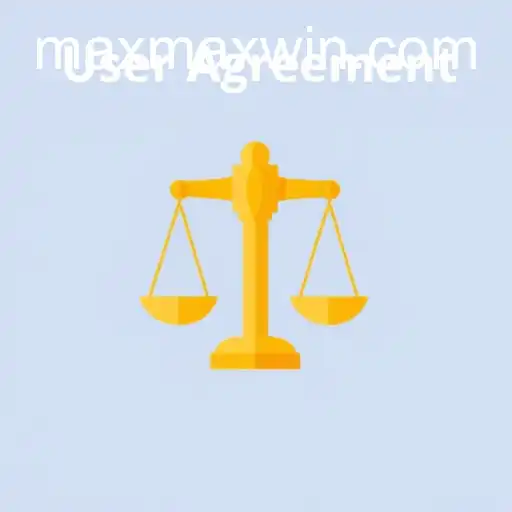User Agreement: Understanding and Navigating Legal Frameworks
In today's digital age, the term "User Agreement" resonates with users across numerous platforms, ranging from social media to online marketplaces. With the proliferation of internet services, understanding these agreements has become crucial for both users and businesses. Whether it's a simple social networking site or a sophisticated e-commerce platform like Maxwin, User Agreements determine the terms of service and the boundaries within which these services operate.
The Significance of User Agreements in Digital Platforms
User Agreements are legally binding contracts between the service provider and the end-user. They lay down the groundwork for acceptable usage and protect the rights of both parties involved. These agreements also act as a shield for companies like Maxwin, safeguarding them against potential legal disputes.
For users, understanding these agreements is essential as it not only informs them of their rights and responsibilities but also educates them about what to expect from the platform. A well-crafted User Agreement ensures transparency, fostering trust between users and businesses.
Key Components of a User Agreement
A typical User Agreement comprises several sections, each detailing different aspects of the user-provider relationship. Key components often include:
- Definitions: Clarifying terms used within the agreement to avoid ambiguities.
- Account Terms: Outlining how users should manage their accounts, including registration and account security.
- Usage Rights and Restrictions: Specifying what users can and cannot do on the platform, especially emphasizing prohibited activities.
- Content Ownership and Licensing: Defining who owns the content uploaded and how the platform may use it.
- Privacy Policy: Explaining how user data is collected, used, and protected.
- Dispute Resolution: Providing mechanisms to resolve disputes, such as arbitration clauses.
Maxwin's Approach to User Agreements
Maxwin, as a leading entity in its domain, sets a prime example of developing comprehensive User Agreements. The platform has meticulously crafted its terms to align with legal norms while catering to user satisfaction. A salient feature of Maxwin’s User Agreement is its transparency, ensuring users comprehend the full implications of using the service.
Maxwin takes proactive steps to update its agreements regularly, reflecting changes in the legal landscape and adapting to new business strategies. This ensures that both the company and its users are well-informed and protected.
Common Challenges and Misunderstandings
Despite the critical nature of User Agreements, many users often overlook or undervalue their importance. Skipping through lengthy agreements without understanding them can lead to unintended breaches of terms. Such negligence might result in account suspension or legal confrontations.
Businesses like Maxwin face the challenge of balancing legal robustness with user-friendliness. Overly complex legal jargon can alienate users, driving them away from understanding their rights and obligations. Conversely, overly simplistic terms might leave the company vulnerable to legal exploitation.
Enhancing User Understanding
To bridge the gap between legal requirements and user comprehension, platforms are adopting innovative approaches. Maxwin, for instance, incorporates explanatory tooltips and FAQs alongside critical sections of its User Agreement. By doing so, the platform aids users in grasping the implications of each clause, fostering informed consent.
Interactive elements like quizzes and explainer videos are also gaining popularity. These tools engage users actively, ensuring they commit essential terms to memory. By prioritizing user education, Maxwin enhances the integrity of its User Agreements, promoting a harmonious user-provider relationship.
The Future of User Agreements
As technology evolves, so too will the nature of User Agreements. Legislative developments continuously reshape what these agreements cover, particularly regarding data protection and user privacy. Platforms like Maxwin are at the forefront, ready to adapt to new requirements and uphold user trust.
Moreover, the rise of artificial intelligence and blockchain technology holds potential for revolutionizing User Agreements. AI can simplify legal language, making agreements more accessible, while blockchain can ensure immutable records of changes and consent.
Conclusion
User Agreements remain a fundamental component of the digital landscape. For platforms like Maxwin, crafting these agreements involves a delicate balance of legality, transparency, and user-friendliness. As digital interactions grow, so too does the responsibility of businesses to ensure their users are informed, protected, and empowered.
Understanding and adhering to User Agreements is paramount for users, as it governs their digital interactions. Meanwhile, companies must continue to innovate and communicate effectively to maintain a loyal, informed user base.










 Join now
Join now